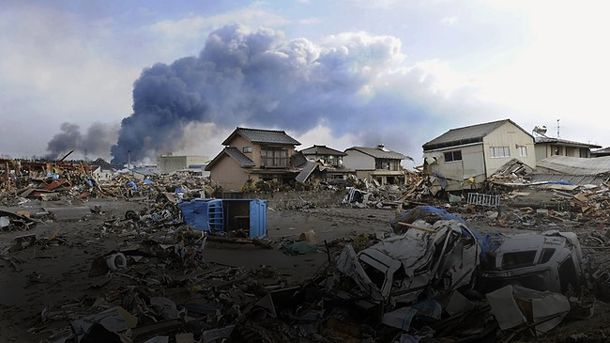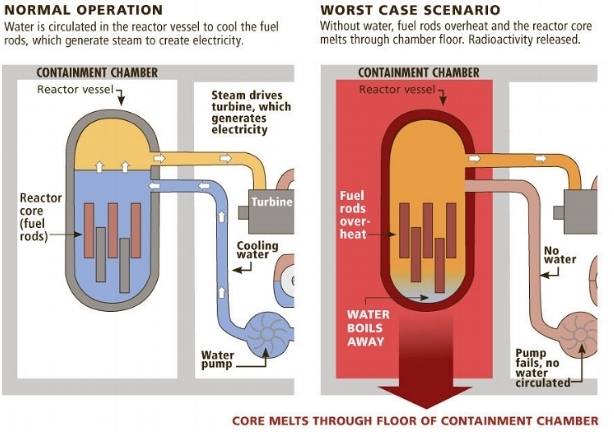
Introduction
On the afternoon of March 11, 2011, a magnitude 9.0 earthquake devastated the northeastern region of Japan . Known as the Great Tohoku Earthquake, the cataclysmic event was centered below the floor of the Pacific Ocean, about 80 miles east of the Japanese city of Sendai. Since the tectonic plates involved were underwater and located close to the Japanese coast, ocean water was displaced, creating massive tsunami waves that increased the amount of damage caused. According to reports, waves as high as 33 feet crashed onto the shore, and penetrated as far as six miles deep.

When all was said and done, Japan was left with hundreds of billions of dollars in damages, as well as a death toll of over 18,000 civilians. Another one of the impacts of the earthquake was meltdown of the Fukashima nuclear reactor, one of the largest in the world at the time. As we will see, the aftermath of the meltdown had significant impacts on Japanese infrastructure both at the time and for years to come.

Immediate Response
Many of us have heard of a “nuclear meltdown”-but what exactly is it? Although not officially defined by the International Atomic Energy Agency (IAEA), a nuclear meltdown usually means the melting of the core components of a nuclear reactor. This is considered a severe failure because it can lead to dangerous, cancer-causing radiation to leak from the plant site and into surrounding areas and water sources. Usually, generators are constantly pumping coolant around the cores. However, if something causes these generators to shut down (like an earthquake), then disastrous consequences can result.

In the case of Fukashima, the emergency response system detected the earthquake, shut down the reactors on time, and turned on the backup generators to keep cooling the cores. However, the tsunami destroyed even the backup generators, leading to a partial meltdown of the core. As workers worked around the clock to stabilize the situation, an 18 mile no fly zone was established and everyone within a 12.5 mile radius was evacuated, displacing over 300,000 people, according to the Red Cross.
Long-Term Impacts
At the time of the nuclear meltdown, Japan was looking for a way to reduce its dependency on fossil fuels. One of the ways it hoped to accomplish this was by investing in alternate methods, with nuclear energy being on the forefront. According to studies, nuclear power accounted for a third of the countries energy production in 2010 and was on track to increase by an additional fifty percent. However, since the accident, due to fears of additional meltdown by both policy makers and the general public, enthusiasm for nuclear as plummeted. Now, less than five percent of Japan’s energy comes from the reactors.

To make up for this loss in power, Japan has had to increase its dependency on fossil fuels in the short term. For the future, however, the Japanese hope the answer lies in renewable sources. Hoping to reach net-zero emissions by 2050, the Japanese government has increased funding for research and provided incentives for companies and individuals to go clean.

This is a really interesting read. I remember seeing this on the news in 2011. The Japanese government has committed to net zero emissions by 2050, which is really good, but they have unfortunately yet to actually release a plan. This disaster was actually a turning point around the world and made people realize that nuclear is not as feasible short term. There were a lot of political consequences of this disaster, and not just in Japan.
Wow, I think the impact that the meltdown had on Japanese infrastructure is insane. With such radical plans to increase their nuclear energy usage from 30% to 45%, reducing it to 5% after the disaster is a huge retrograde action (from a renewable resource perspective). It’s incredible what nature can do to so easily demolish what humans spend hundreds of years working on. I hope that the Japan and the rest of the world can take this meltdown as an example and strengthen their environmental defenses against accidents like this in the future.
I was interested to learn more about Fukashima, since I originally knew only the basic facts. I knew that an earthquake and subsequent tsunami led to severe damage at the nuclear reactor, but had no idea about the consequences long term. It makes sense that support for nuclear power would decrease in the following years drastically, since people wouldn’t want a repeat in what happened. With an increased reliance on fossil fuels it does seem like a step back in terms of long term sustainability, but it is good that the government has increased attention for renewable sources in the future.